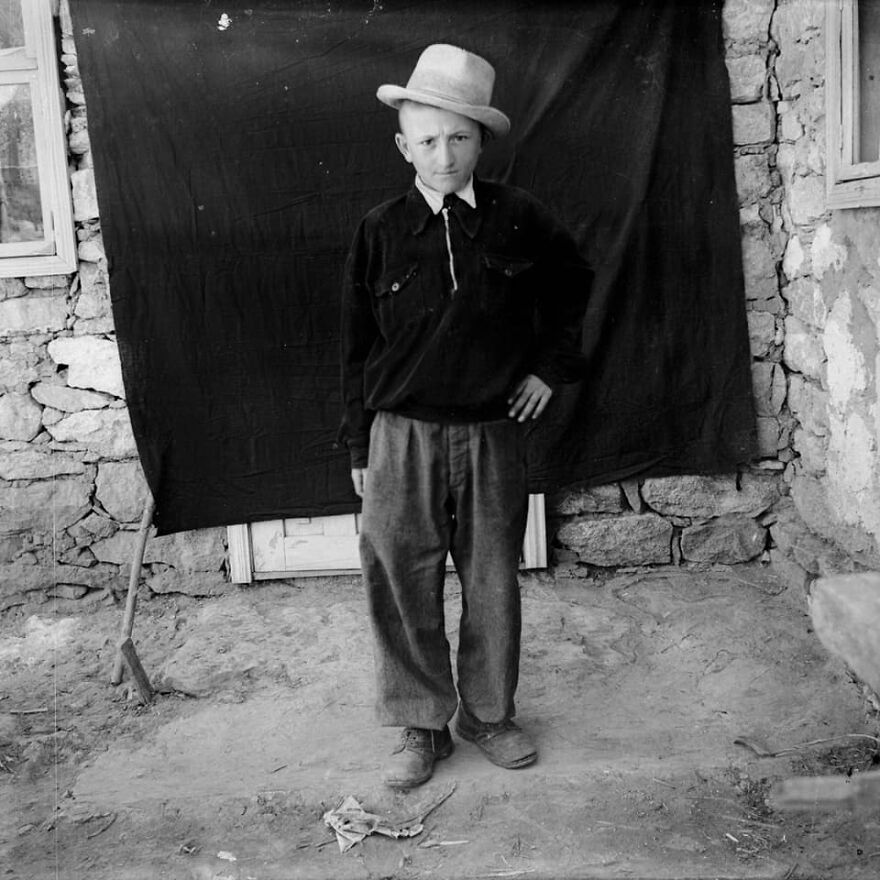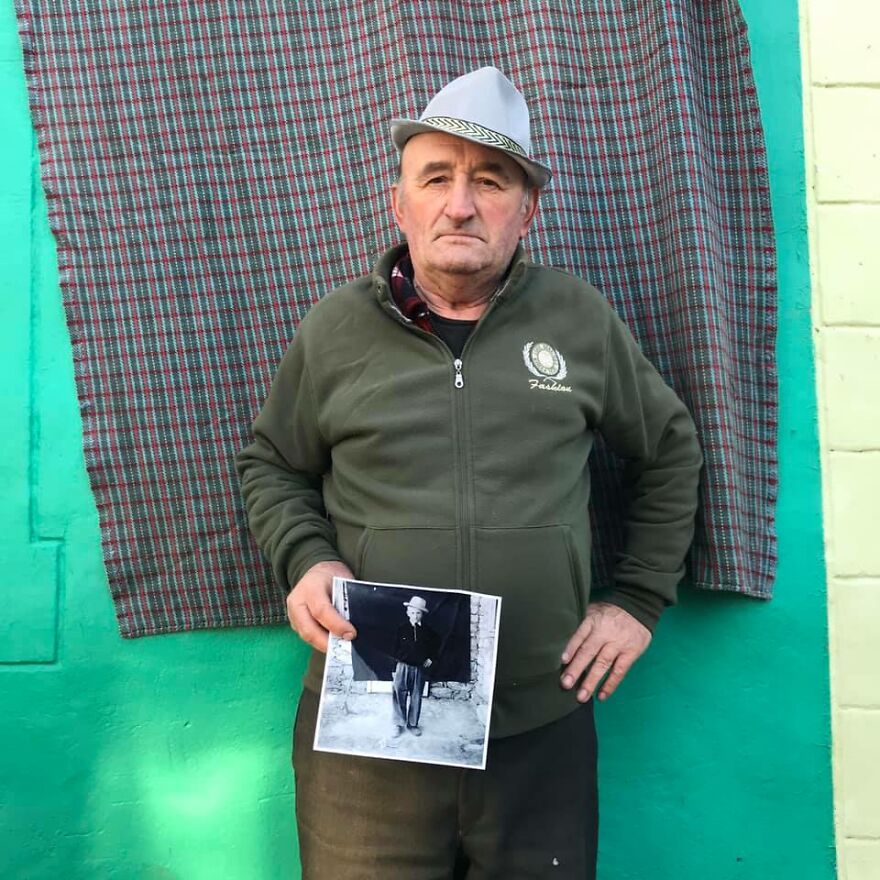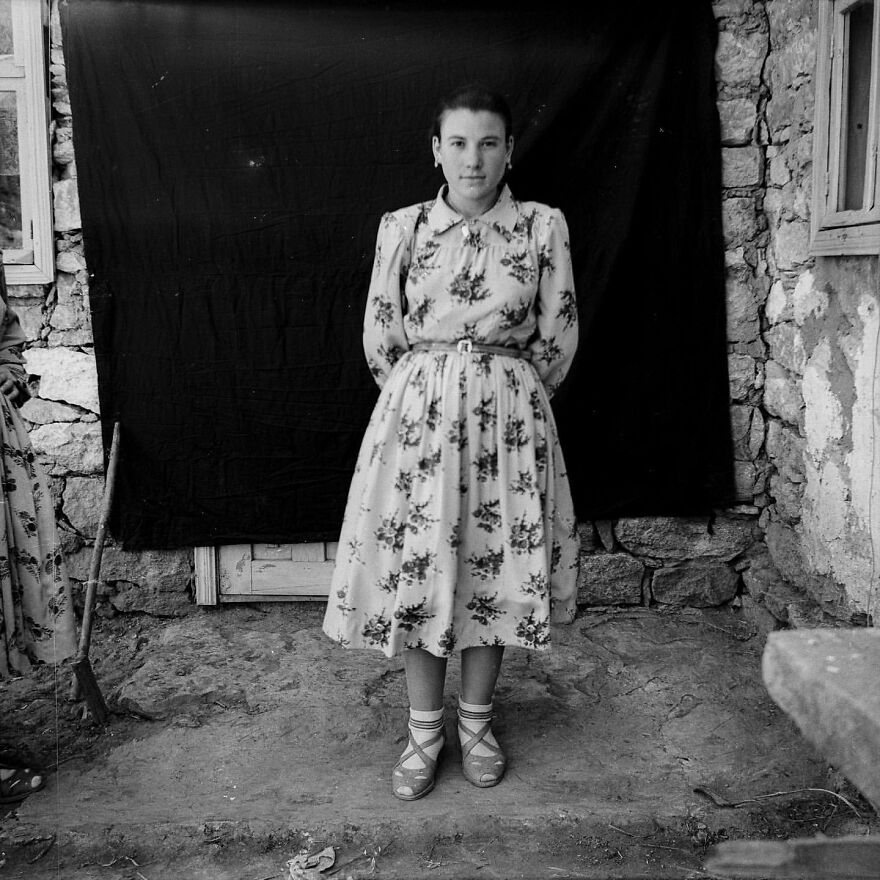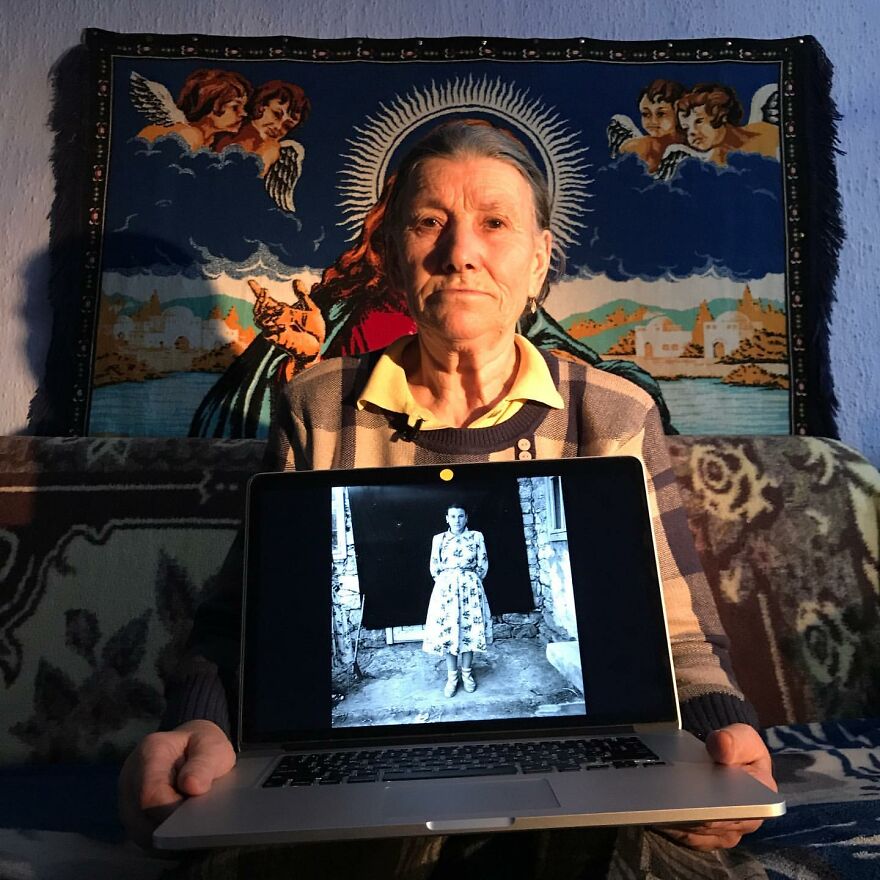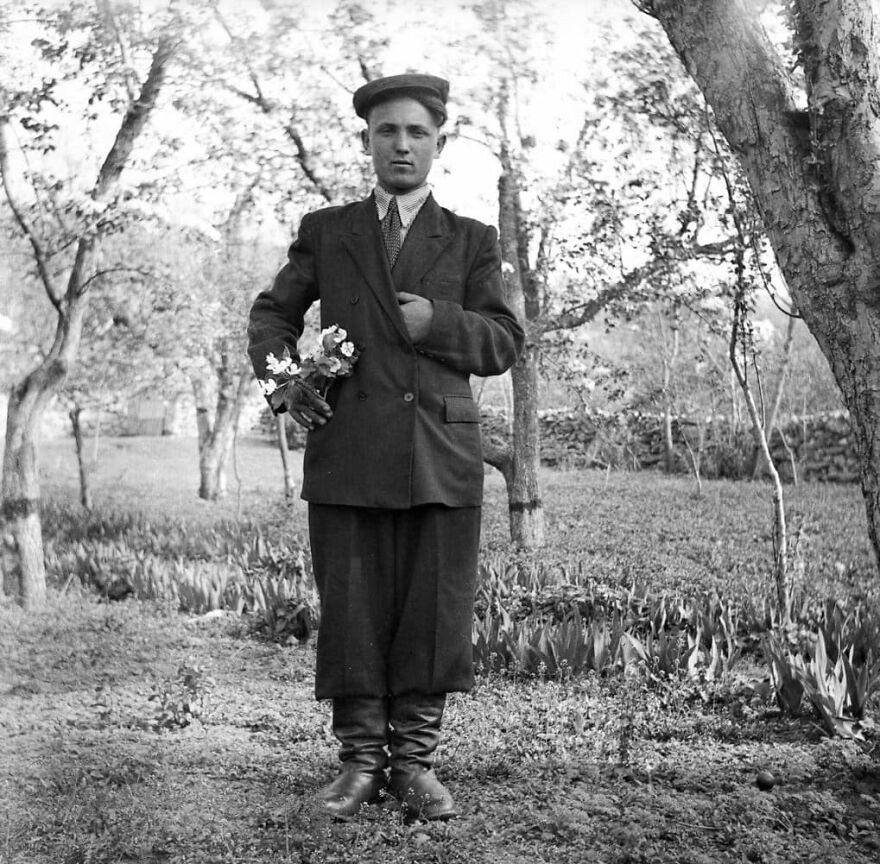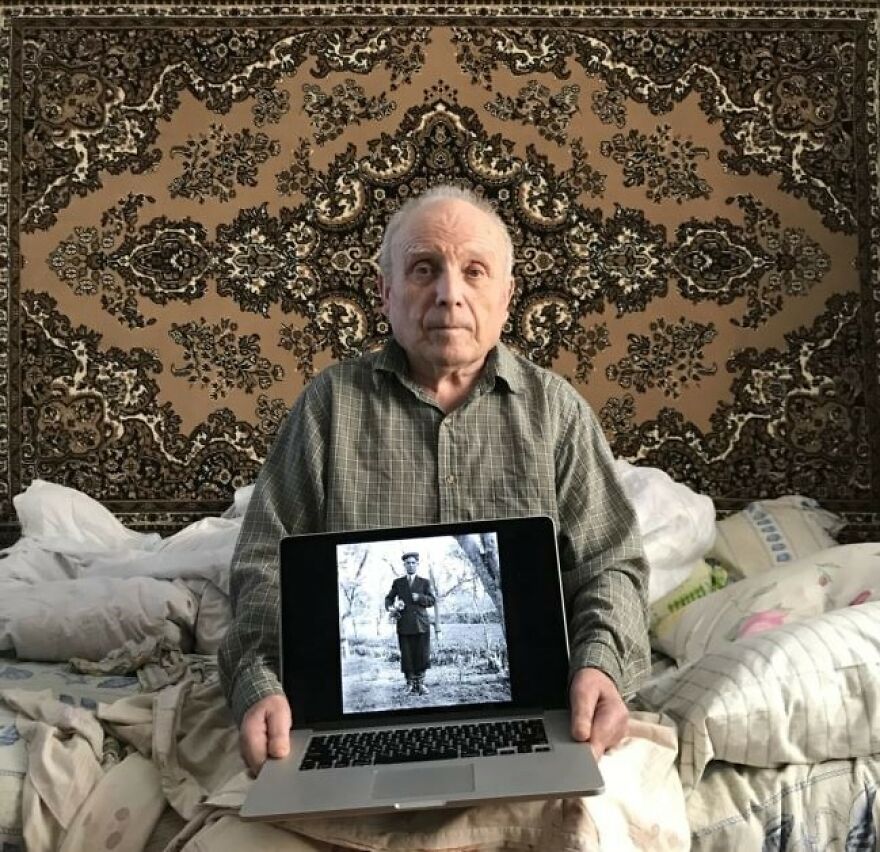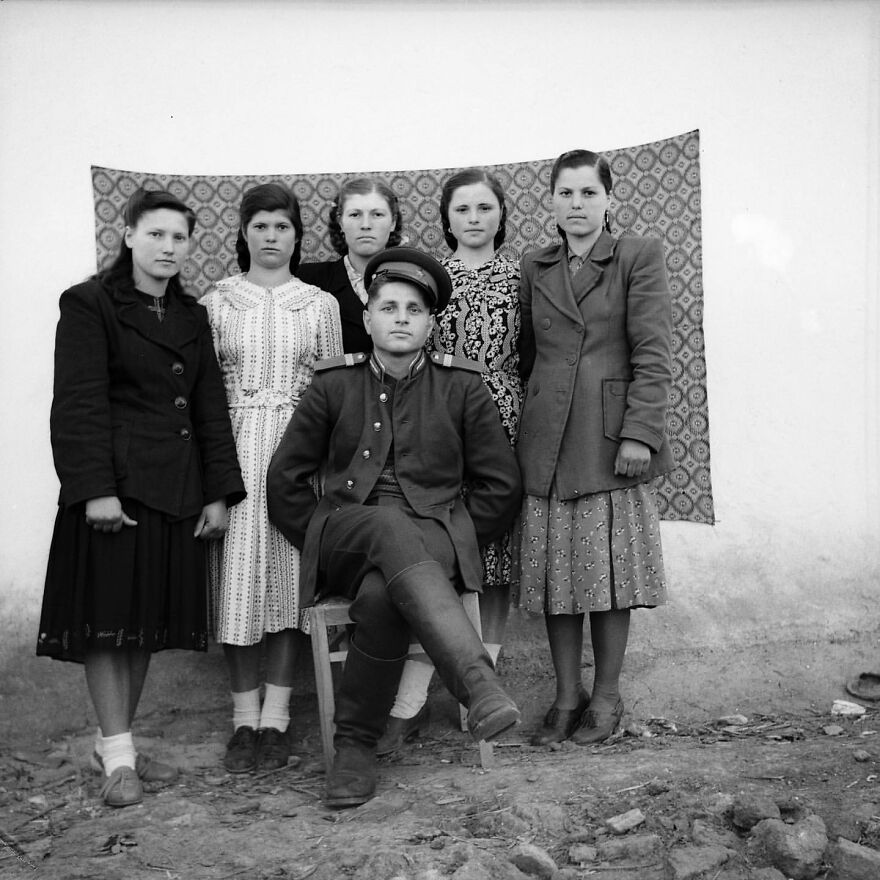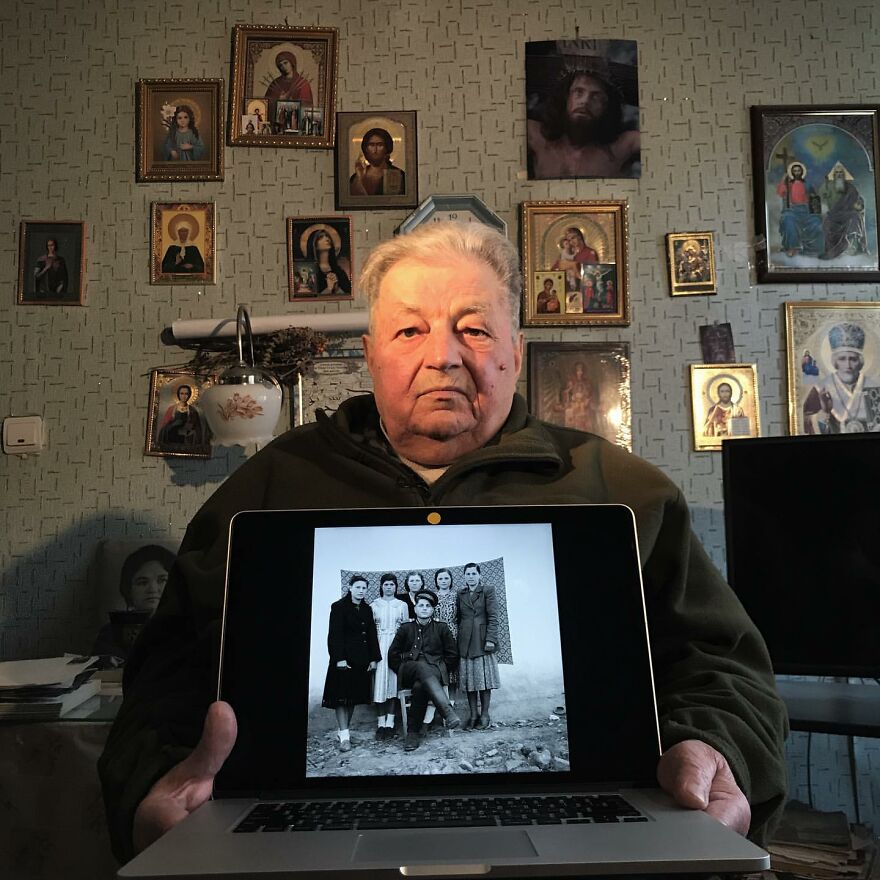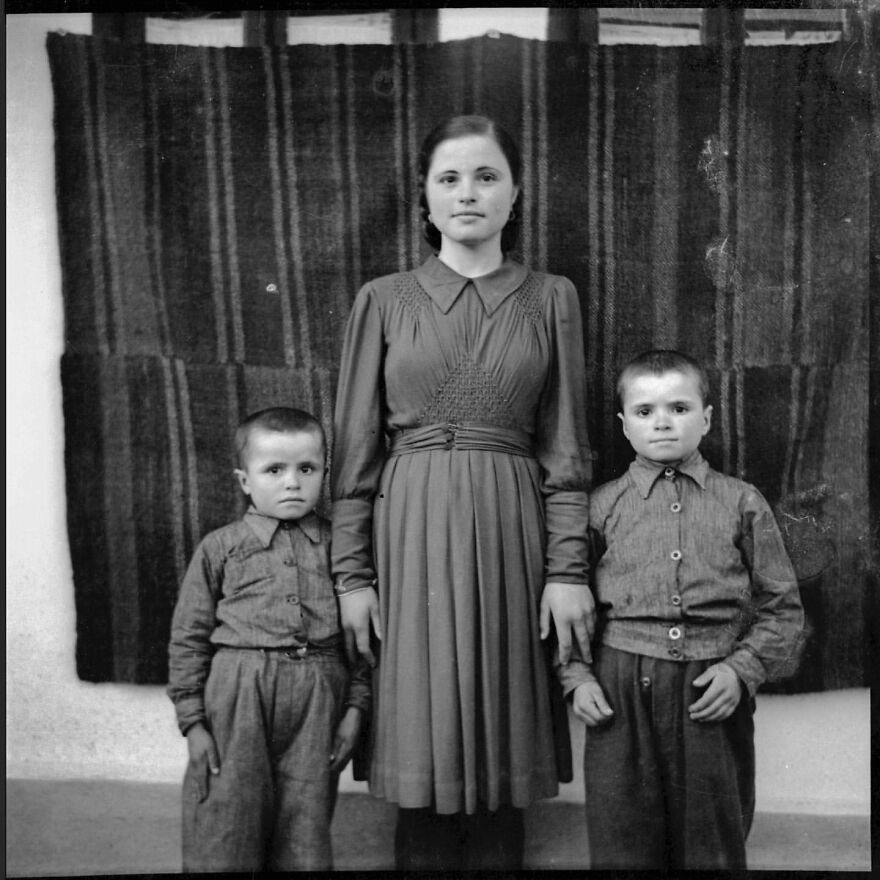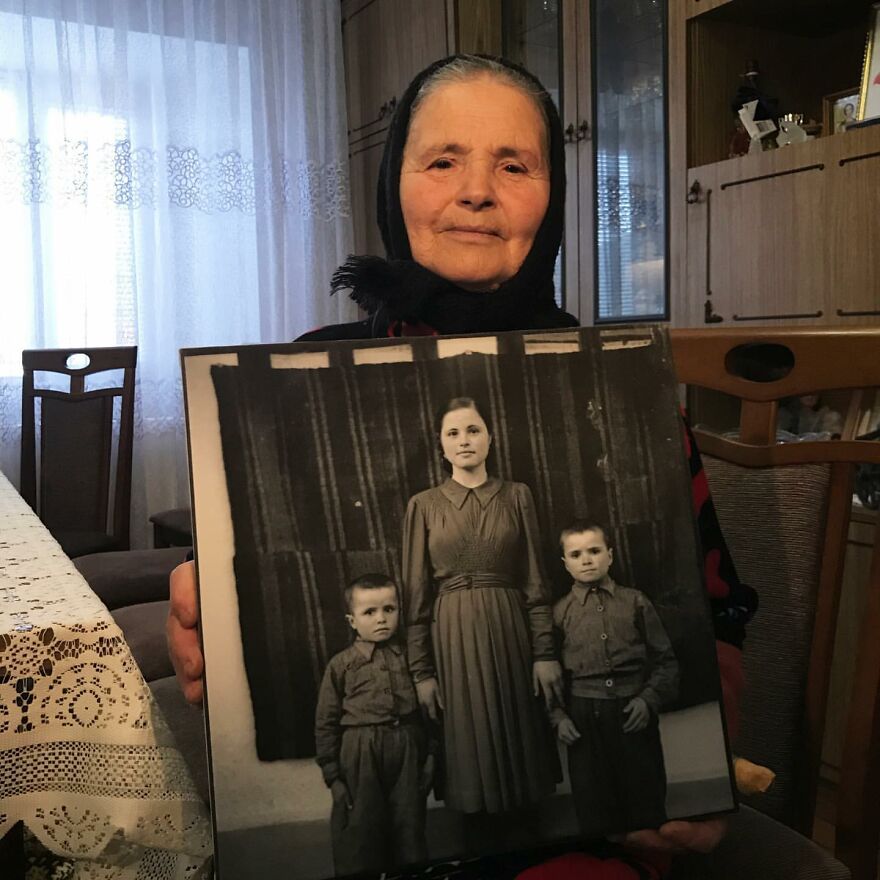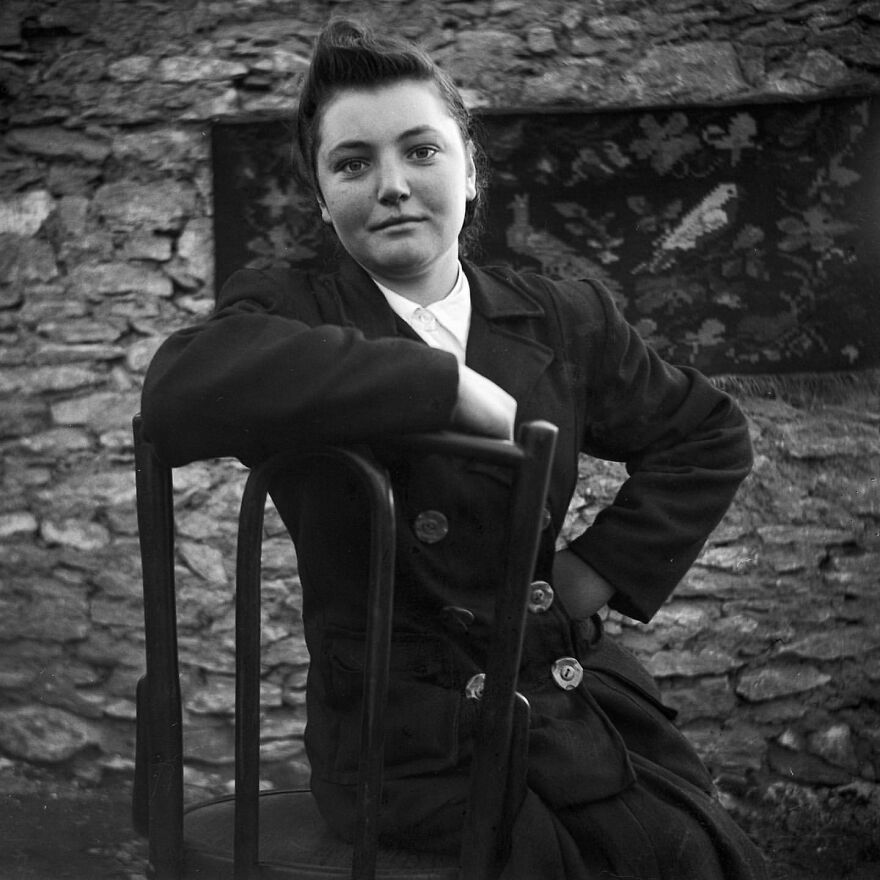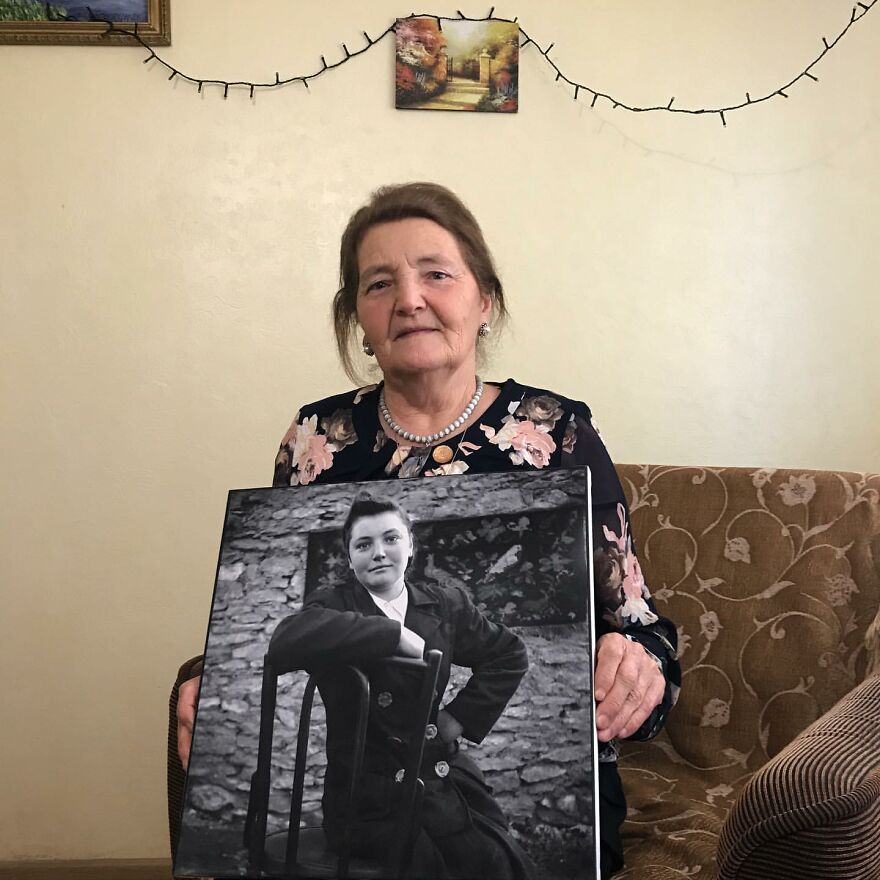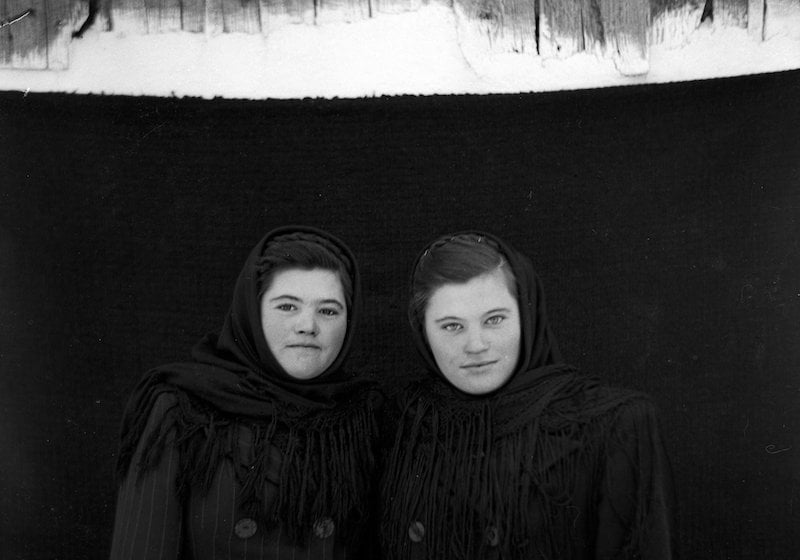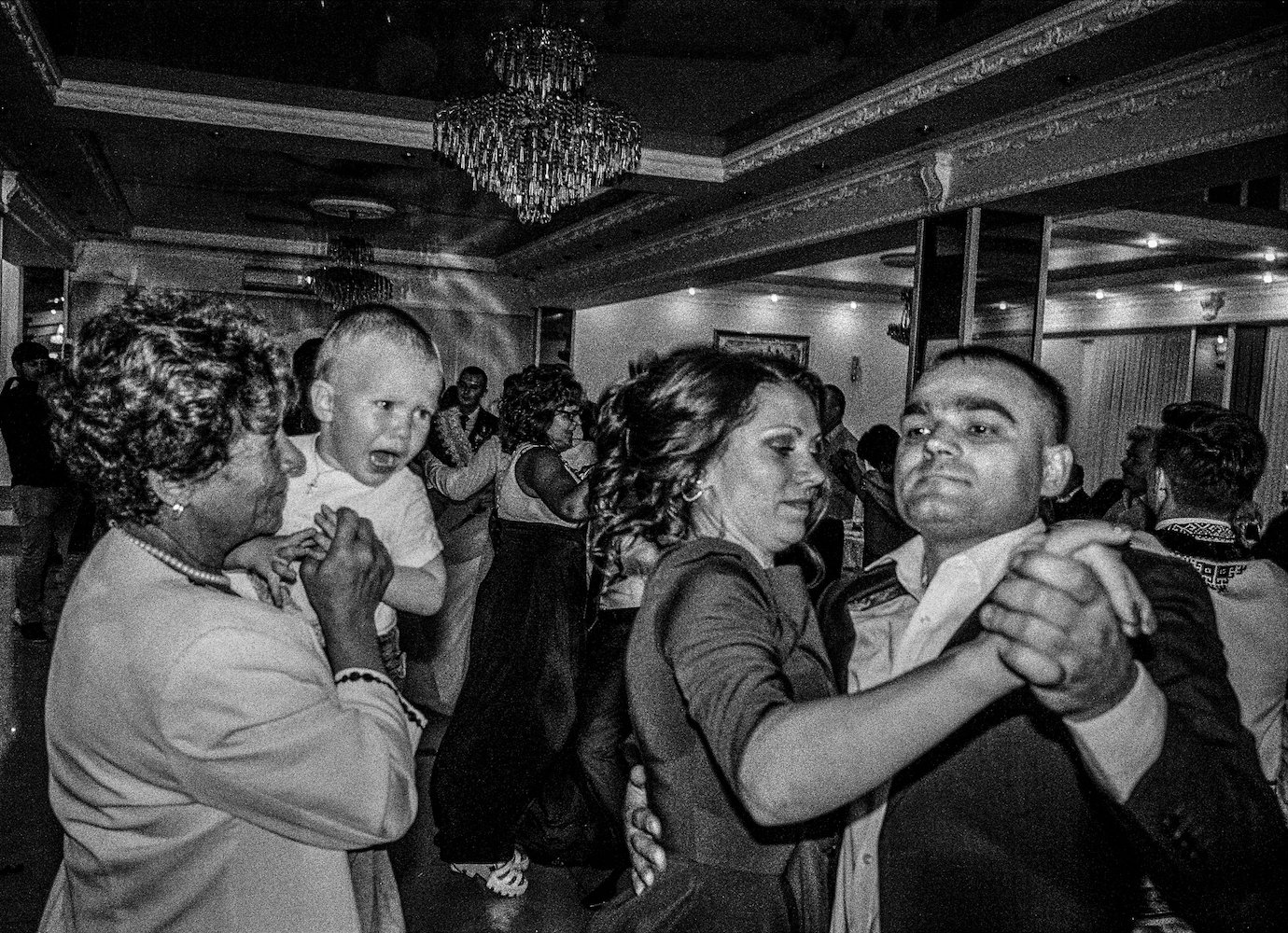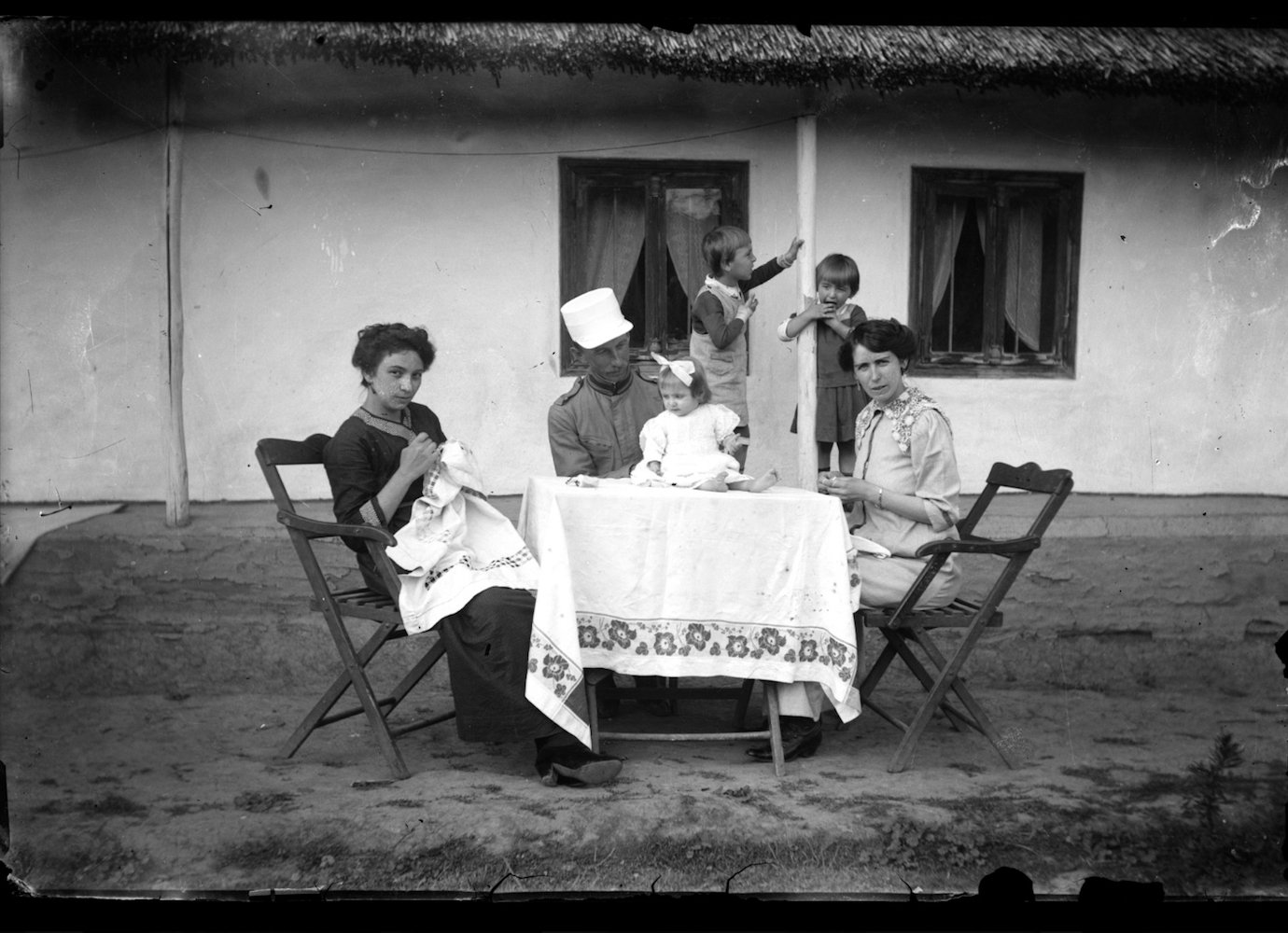Lost and found: the photo project reuniting Moldovan villagers with their younger selves
In 2016, film school student Victor Galușca found the negatives for thousands of photographs in an abandoned home in the northern Moldovan village of Roșietici.
He took them to his teacher, photographer Nicolae Pojoga, and together they started clearing and printing the 4,000 vivid portraits of the people living in the village between the 1950s and the 1970s. The photos belonged to Zaharia Cușnir (1912-1993), an amateur photographer who worked as a teacher before the Soviet occupation but was forced to take on manual jobs — such as metalwork, construction, and shepherding — by the new regime.
The incredible archive was made into a photo book, showcased at exhibitions in Chișinău and Bucharest, and is now available to view online. But the publicity also meant that people who recognised themselves in Cușnir’s photographs got in touch with Galușca. The young photographer decided to embark on a new project: taking pictures of Cușnir’s former subjects with the black-and-white portraits of their younger selves.
The results give a glimpse into the tumultuous changes that have marked these people’s lives over the past half-century. Shot in their homes, against typical rugs hung on walls, Christian icons, or in bed, these portraits are also metaphor for the disappearing world of the Moldovan village amid post-communist economic instability, and mass emigration.
Zaharia Cușnir pictured in the middle
Cușnir’s son-in-law, postman Sergiu Cebotari, was one of the last few people living in Roșietici valley, where the photographer’s abandoned home also stands. Cebotari died last week: he had been bedridden for the past year and a half with pains in his legs following the death of his wife, Ioana. “I feel like with his death, that whole old part of the village is dying,” Galușca, who attended and filmed Cebotari’s funeral, told The Calvert Journal.
Four of the other people that Galușca photographed live in the villages nearby, although one, Aurel Sarmaniuc, is based in the new part of Roșietici, on top of a nearby hill. He can’t remember the last time he went to the valley where he grew up. In the 1960s, like most people, Sarmaniuc’s family moved to the top of the hill, close to the collective farm. But even there, Sarmaniuc is one of just 300 people left in the village — and he too is thinking of emigrating. Since the 1990s, Roșietici has shrunk to a tenth of its former population of 3,000. Sarmaniuc’s son owns 200 sheep but it’s difficult to care for them and find the local workforce they need. Like so many Moldovans looking westward for job opportunities, they are thinking of moving to Germany.
“Everyone pities the fact that the village in the valley is being destroyed but no one does anything about it,” says Galușca, who visits the village twice a month. He wants to help revive Roșietici and turn it into a tourist attraction, much like the popular Orheiul Vechi village, 100 kilometres to the south, crossed by the same river Răut. His first dream project is restoring Cușnir’s home and transforming it into a museum. Galușca has already found a group of enthusiasts who can help restore the house: a group of students and their teacher from the College of Construction in Chișinău, who have worked on similar traditional architecture projects using clay and horse manure. But he is yet to find the funds.
Galușca, however, feels optimistic, especially after being in contact with a generation of younger Moldovans born in Roșietici with more financial and political power. He himself is committed to managing the village museum for a while, before giving it to the mayor, the school, or the local library, to administer.
Until then, Galușca plans to host a photo exhibition in the village, where he also hopes to reunite an old couple featured in one of Cușnir’s photos: Tamara Cușnir and Vasile Tocarciuc. A pair in their youth, the two ended up marrying different people and living in different villages after a fight that marked the end of their relationship. Yet they still remember each other fondly. Tocarciuc even has the negative of a photo in which they were portrayed together, with Tamara Cușnir’s outline having been cut out of the picture. Since both of their spouses passed away, Galușca wants to organise the old couple’s first meeting in decades during the summer show.
You can donate to Galușca’s Zaharia Cușnir project on Patreon.
